
Costa Rica birds have taken the world by storm – it’s one of the world’s top birding destinations and with good reason. Despite being roughly the same size as Wales or West Virginia, Costa Rica has a bird list with more than 930 species.
Yeah, that many! On that list are several parrots, macaws, toucans, more than 50 hummingbird species, colorful tanagers, and much more. I live in Costa Rica, guide many birders in Costa Rica, and can assure you, this place really is a birding wonderland.
What can you expect? Is Costa Rica easy to visit? What’s the birding in Costa Rica like and what kinds of birds can you see?
On this page
What To Expect When Visiting Costa Rica?
If you have never traveled abroad, going to Costa Rica or other countries might seem daunting. Luckily, Costa Rica is one of the easiest places to visit, especially for birding. From most spots in North America, Costa Rica is just four to six hours by plane, and there are frequent flights.
Having been a popular destination for decades, Costa Rica also has great tourism infrastructure. That means you’ll find plenty of lodging, dining, transportation, and tour options. Since most places in Costa Rica accept US dollars as well as cards, you won’t have a big need for Costa Rica currency (“colones”) either.
But what about language differences? Tropical diseases? Drinking the water?
Those issues are easy too! In Costa Rica, Spanish is the main language, but a high percentage of folks in the tourism sector also speak English (and other languages). Fortunately, Costa Rica doesn’t suffer from malaria, Yellow Fever, or many other deadly tropical diseases. Cases of Dengue do happen, but the local health system keeps track of them and works to eradicate any outbreaks.
Costa Rica is also one of the only countries in Latin America where you can actually drink the water. No kidding! Costa Rica has a water agency that routinely tests drinking water coming from mountain springs.
An Unique Array Of Birds
Costa Rica has such a huge number of bird species partly because this mountainous nation has a few different climates. Above 5,000 feet, the weather is mild and cool and can get down to 45 degrees in the highest areas.
In lower elevations, it’s fairly hot with temperatures routinely reaching 85 degrees. It’s also humid in many parts of the country but drier around San Jose and northwestern Costa Rica.
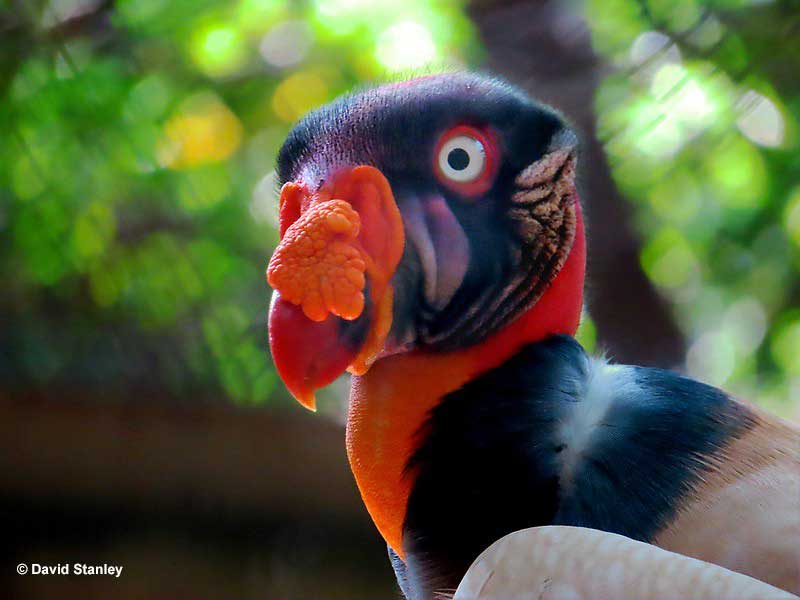
Located in Central America, Costa Rica offers birding experiences like no other country!
Being so close to the equator, instead of winter and summer, we have a dry season from December to April, and a wet season the rest of the year. However, in the highlands and on the Caribbean side of the mountains, it can rain any time of the year.
Different types of birds live at different elevations, on either side of the mountains, and in dry or wet forest habitats. There are also wetlands and other habitats that have their own sets of birds, and migrant species that winter in Costa Rica.
These factors mean that you can literally see 100 species one day, another set of different species in high elevations, and then more bird species on the other side of the mountains. Among those bird species are many incredible birds. The following are some of my more memorable sightings.
Great Curassow
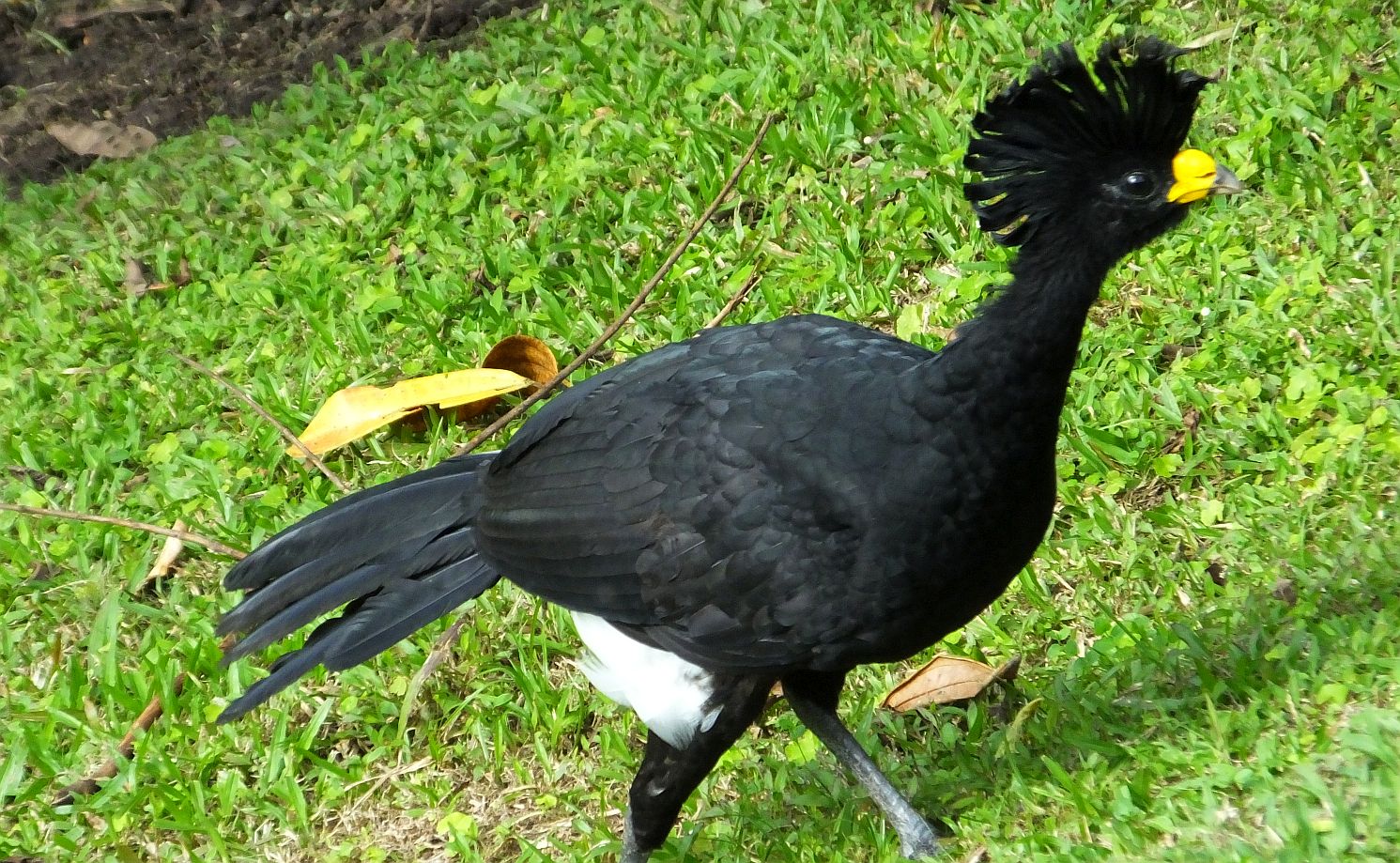
© Patrick O’Donnell
Great Curassows are big, fancy, turkey-like birds. Although they range from Mexico to Ecuador, in most areas, they have been extirpated by hunting. Not in Costa Rica! Thanks to protection and much less hunting, Costa Rica is definitely the easiest place to see these wonderful birds.
Watch for them in protected areas at lower elevations, some ecolodge gardens, and even at some fruit feeders (especially the Arenal Observatory Lodge)!
I’ll never forget the first ones I saw; a group of ten birds that sauntered in front of me while birding the tropical dry forests of Santa Rosa National Park in 1993.
Snowcap
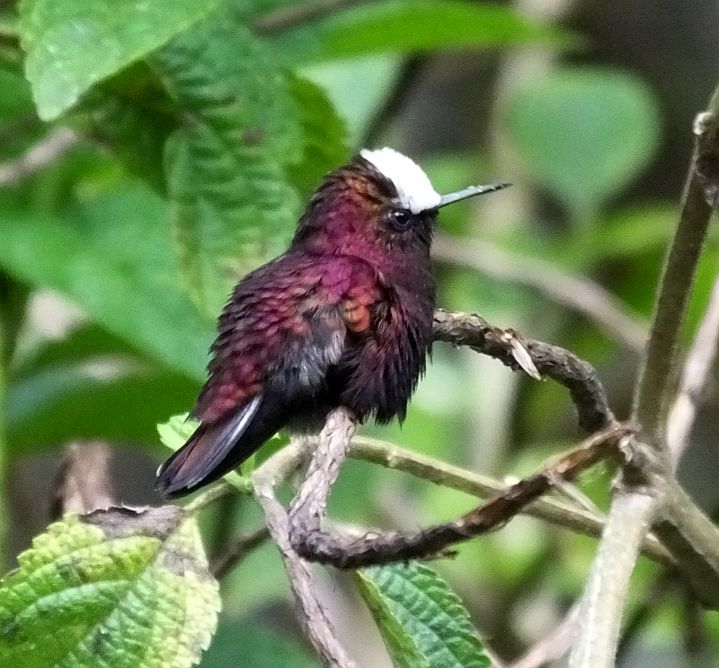
© Patrick O’Donnell
No, it’s not a chocolate delight, but it almost looks like one! The male of this unique hummingbird looks as if it was dipped in burgundy and then capped with powdered sugar. Very few birds show these colors and the Snowcap looks downright surreal.
Read more: How do hummingbirds get their colors?
The Snowcap isn’t the easiest of birds to see. They are tiny and often frequent the tall canopy of foothill rainforest. However, some of the better sites are El Copal, Rancho Naturalista, and the Tenorio Volcano area. The first Snowcaps I laid eyes on were near Nectar and Pollen; a garden dedicated to birding and bird photography.
Purple-throated Mountain-gem
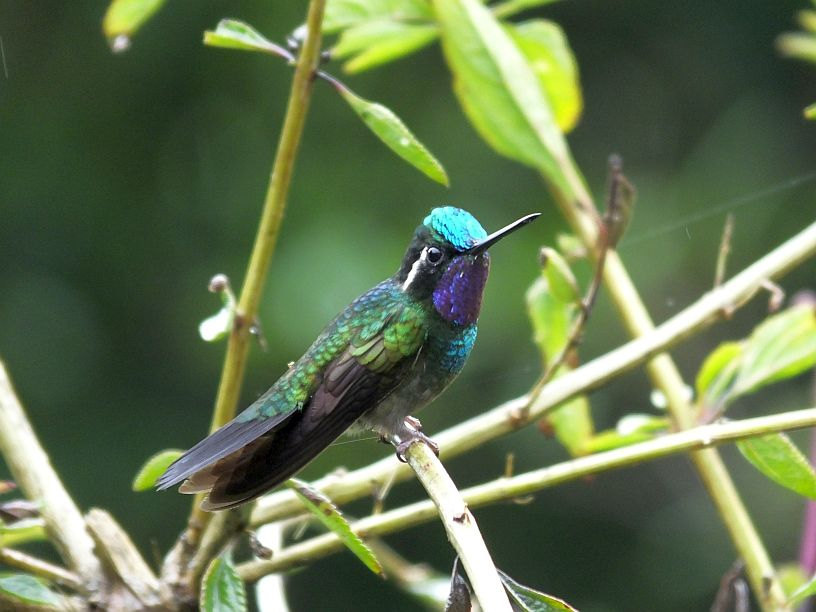
© Patrick O’Donnell
With so many beautiful hummingbirds in Costa Rica to mention, it’s hard to just settle on one or two. However, I figured this stunning hummingbird was a good choice.
Much easier to see than the Snowcap, Purple-throated Mountain-gems are common in cloud forests in various parts of Costa Rica.
Like dozens of other bird species in the mountains of Costa Rica, you can only see Purple-throated Mountain-gems in Costa Rica and western Panama. These beauties forage at forest flowers but also visit feeders, especially in the Monteverde area. They are also easy to see in the cloud forests around Poas Volcano.
Sunbittern
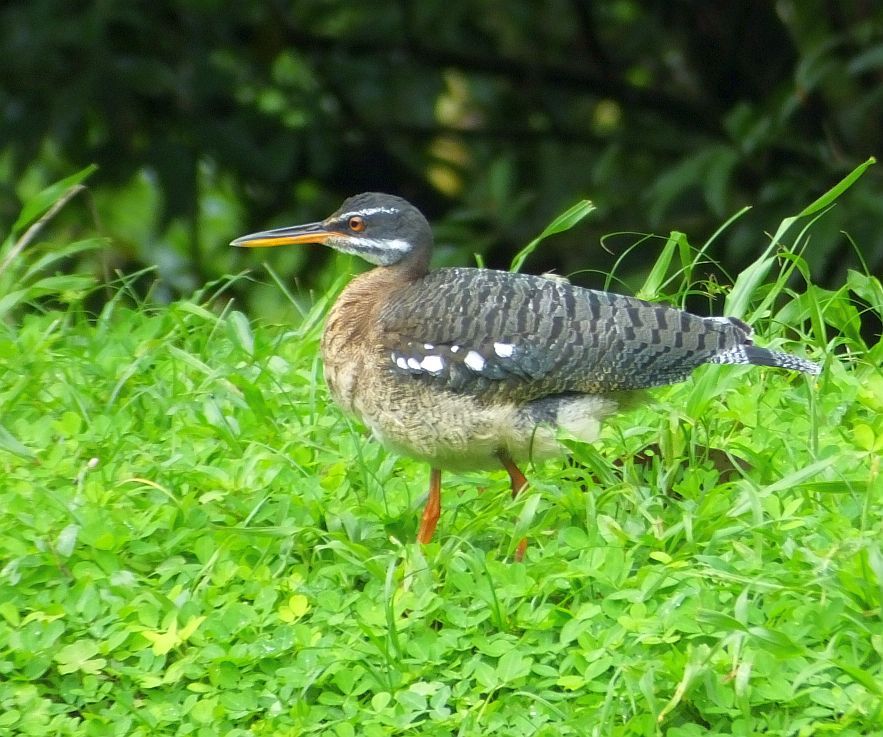
© Patrick O’Donnell
Is it a bittern? A rail? What exactly is this bird?! Sunbitterns are unique and ancient waterbirds that form their own bird family. Their closest living relative is the Kagu, an odd flightless bird restricted to the island of New Caledonia!
In Costa Rica, lucky birders espy Sunbitterns on forested streams in many parts of the country. Although they aren’t rare, Sunbitterns are shy and easy to overlook. Some of the better sites are near Rancho Naturalista, boat rides on the Sarapiqui River, and the Arenal area. The first one I saw was a bird quietly foraging along a sun-dappled stream in the Monteverde area.
King Vulture
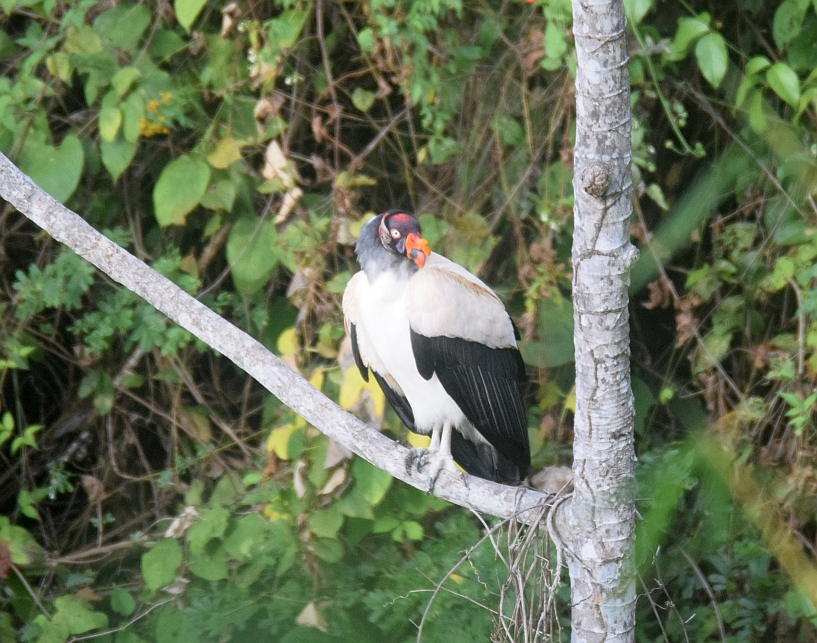
© Patrick O’Donnell
Vultures aren’t always the most exciting of birds but how about a huge, white vulture with a colorful face? King Vultures have breathtaking white plumage with black flight feathers and a colorful, naked head.
In Costa Rica, we routinely see King Vultures soaring high over forested habitats in many areas.
Related: A beginner’s guide to birdwatching
I’ll never forget the first one I saw: a massive adult that wheeled low over the forest and straight into view on my first trip to Costa Rica in 1992. It was also my first day birding in Braulio Carrillo National Park and when I saw that King Vulture, I nearly dropped my binoculars in shock!
Ornate Hawk-Eagle
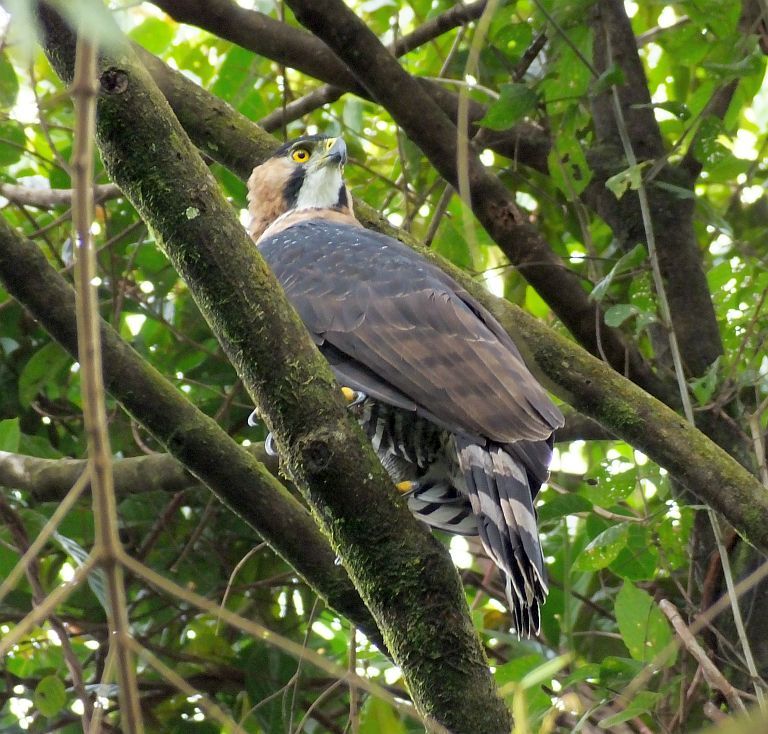
© Patrick O’Donnell
Costa Rica is also home to many raptor species. Most are uncommon forest species and not the easiest birds to see. However, if you visit the largest forested areas, you have a fair chance of watching several raptors, including this one; the amazing Ornate Hawk-Eagle.
This raptor is like a goshawk on steroids. If that sounds powerful, yes, it sure is! Ornate Hawk-eagles routinely prey on big birds and mammals as large as Squirrel Monkeys and Opossums. They are easier to see in Costa Rica than many other places too. I often see Ornate Hawk-Eagles while birding in Costa Rica.
Black-and-white Owl
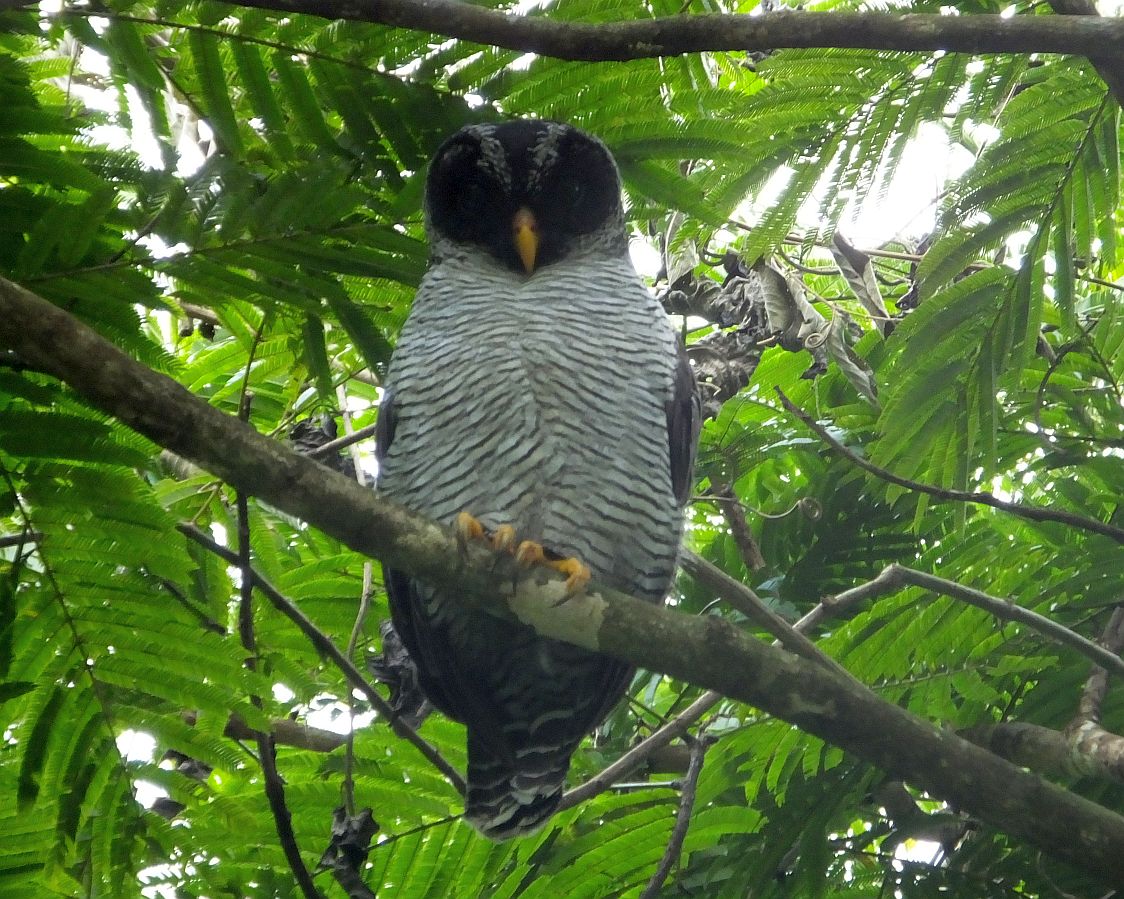
© Patrick O’Donnell
Costa Rica is home to more than a dozen owl species. The Black-and-white Owl is one of the most striking. Around the same size as a Barred Owl, Black-and-white Owls frequent forested and semi-forested sites in much of Costa Rica.
This owl specializes on hunting bats and often catches them near street lamps in the dark of the night. The first ones I saw were a pair of Black-and-white Owls that lived in a park right in the heart of the town of Orotina. Despite lots of noise and activity, the owls lived there for several years and were seen by many busloads of tourists!
Resplendent Quetzal
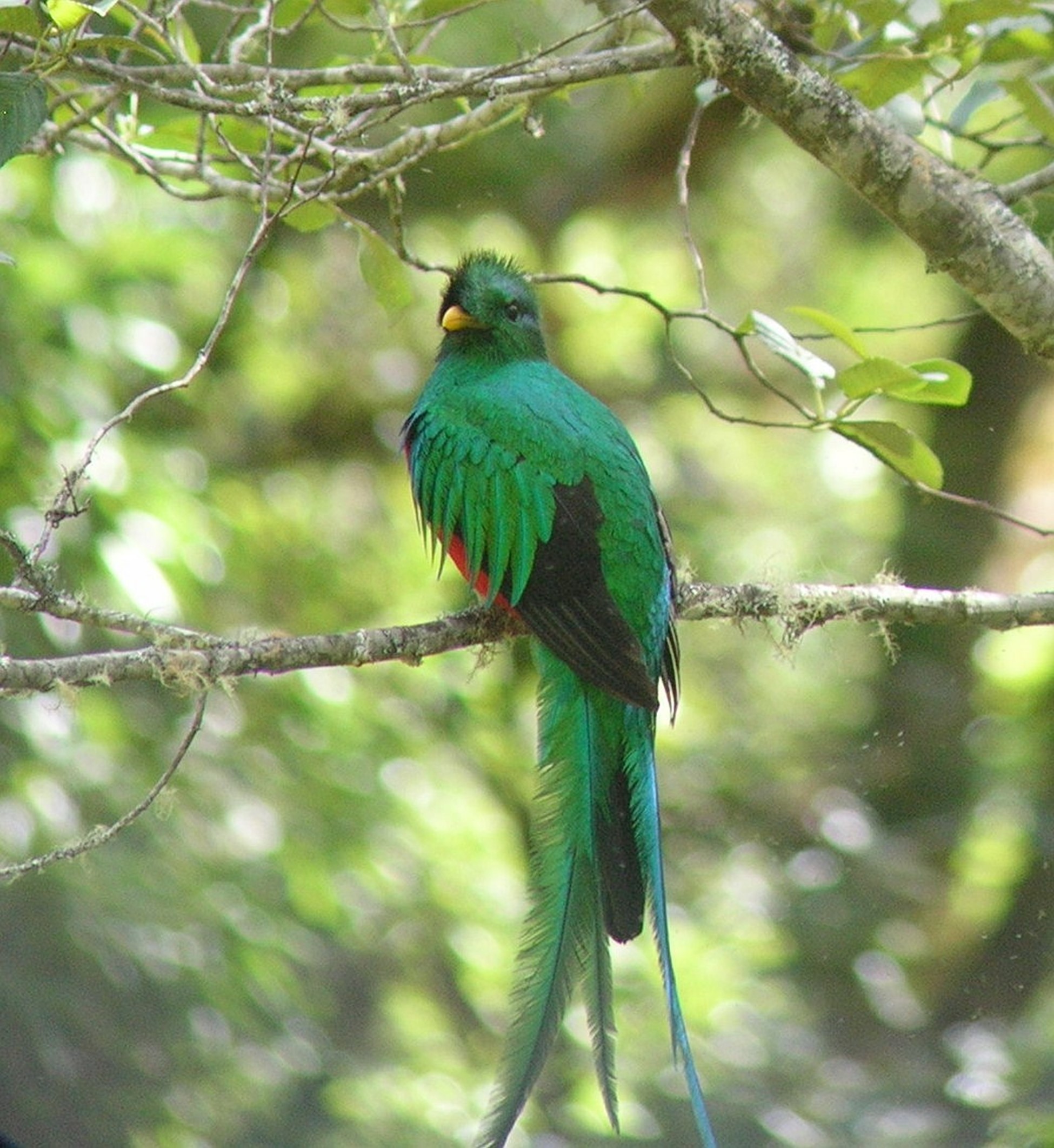
© Patrick O’Donnell
Of all the incredible birds in Costa Rica, this species might be the bird that people want to see the most.
The males are simply one of the most magnificent bird species in the world. Really, when you witness their shimmering emerald green, gold, and blue colors offset by a white undertail, and plush red underparts, it’s easy to see why it was (and still is) sacred to the Mayans.
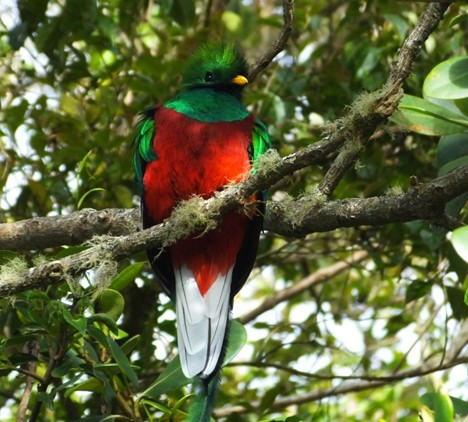
© Patrick O’Donnell
Much to our great fortune, Costa Rica is a fantastic place to see this mega bird! Quetzals are present in most cloud forest sites, and daily quetzal watching tours are also available.
Fiery-billed Aracari and other toucans
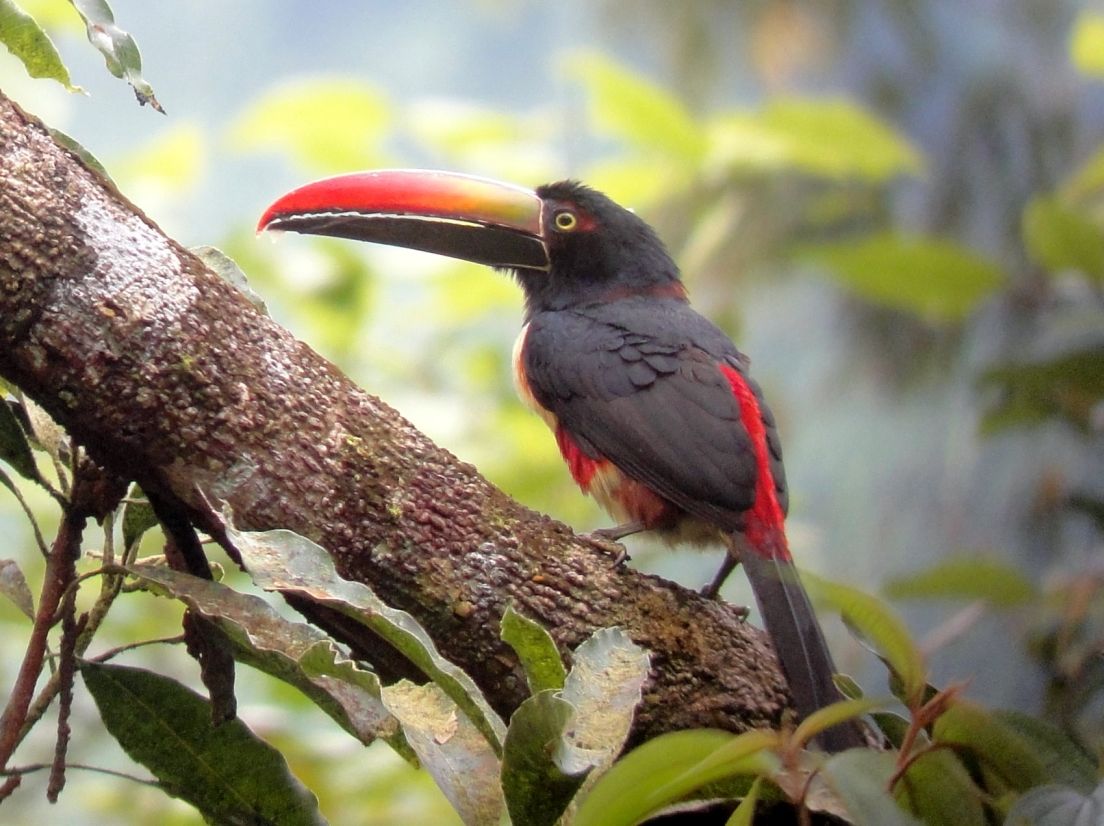
© Patrick O’Donnell
As I have mentioned, toucans also live in Costa Rica. Six species of these funny birds frequent forests in most of the country. Most are also common, even the big Keel-billed and Yellow-throated Toucans!
The Fiery-billed Aracari is a small toucan that only lives in the rainforests of Costa Rica and western Panama. Recently, we have also been seeing this showy bird in forest patches right near San Jose!
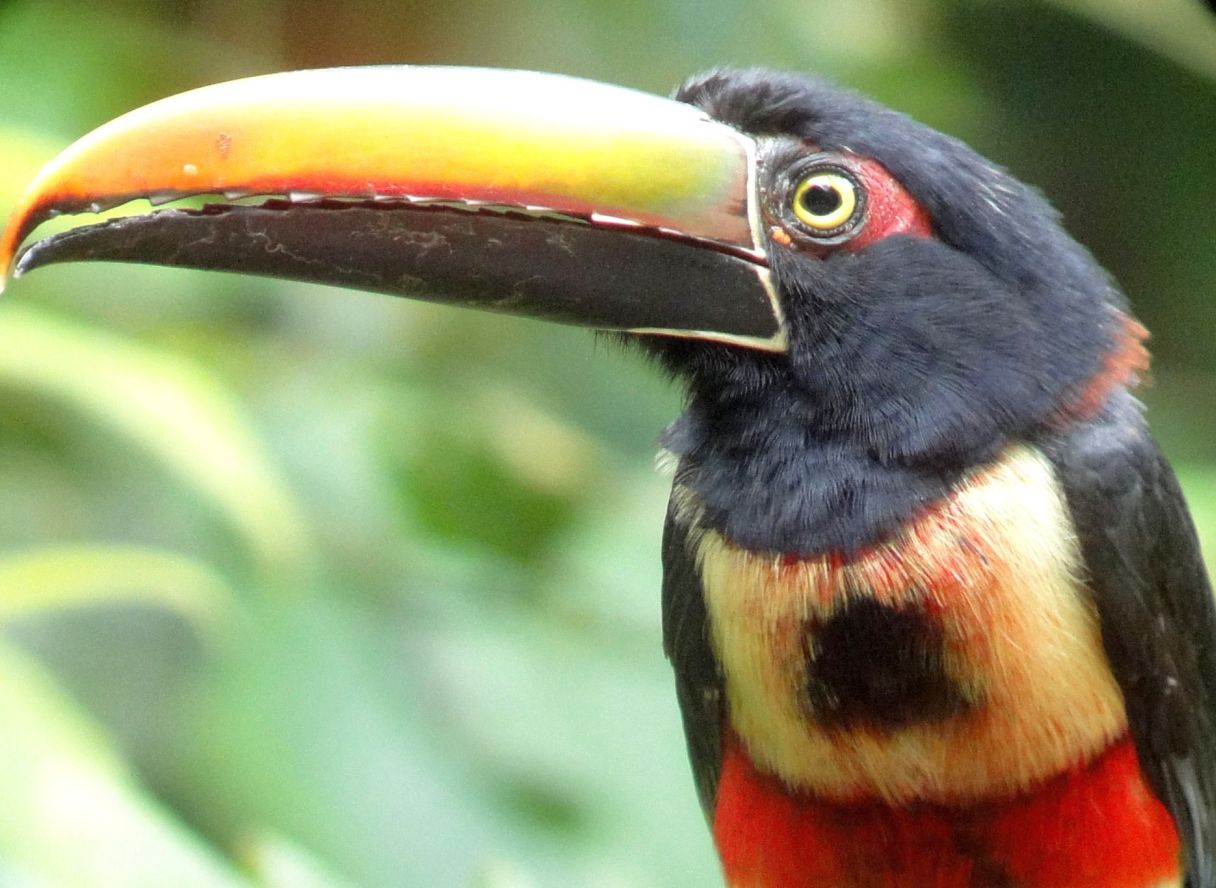
© Patrick O’Donnell
Like other toucans, this species forms small flocks that roam through the trees in search of fruit and small animals. They seem pretty smart and act a lot like jays and crows!
Macaws
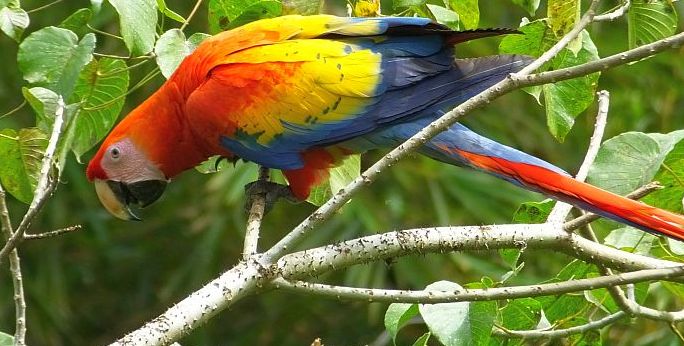
© Patrick O’Donnell
Costa Rica is an excellent place for watching wild macaws. Although we only have two species, both are pretty easy to see!
The spectacular Scarlet Macaw lives around lowland tropical forests for much of the Pacific coast and in parts of the Caribbean lowlands. Thanks to protection, these amazing birds have become common and accustomed to living near people.
In the Caribbean lowlands, we also have the Great Green Macaw, a critically endangered species with its last stronghold in Costa Rica.
Related: How long do parrots live?
We see these majestic birds around La Selva Biological Station, at and near Laguna del Lagarto, and some other places.
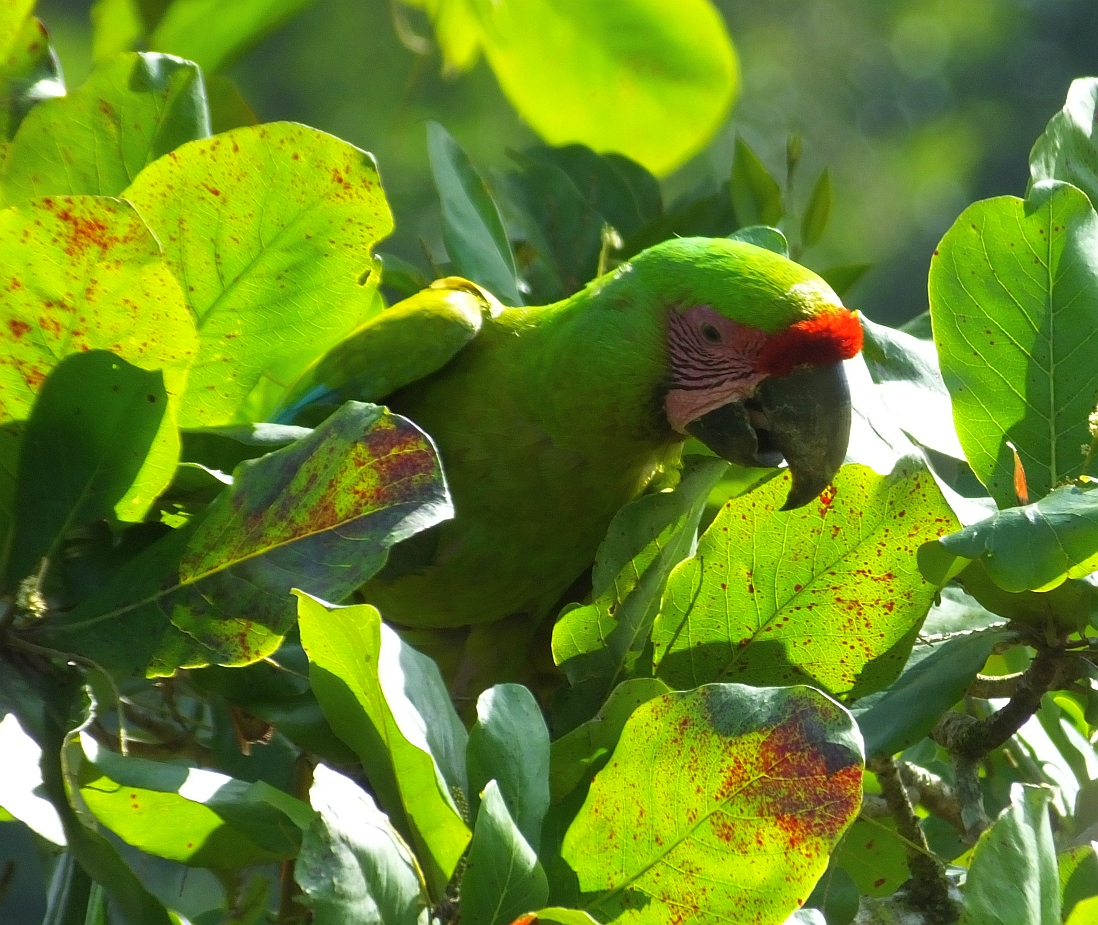
© Patrick O’Donnell
Red-capped Manakin
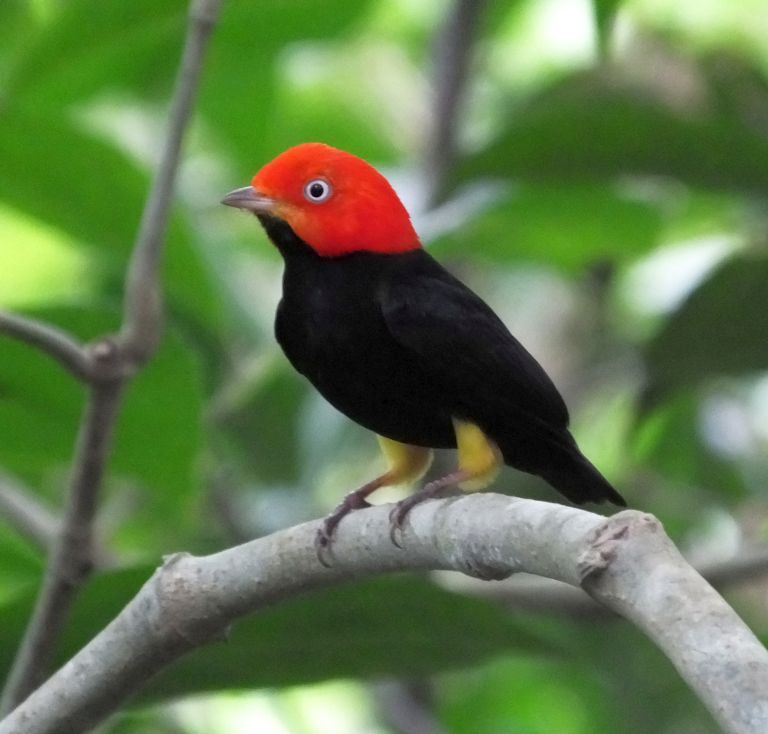
© Patrick O’Donnell
Manakins are fancy little dancing birds of the rainforest. The Red-capped Manakin in particular is one of the best dancers of the bunch!
During their courtship rituals, males do an avian “moonwalk” as they shuffle backwards along a branch. In Costa Rica, we see Red-capped Manakins in lowland rainforest. They are fairly common but can hide quite well in the dim forest understory. To find them, it really helps knowing what they sound like.
Red-capped Manakins live in a lot of places in Costa Rica. A few of the better sites are the Laguna del Lagarto area, the Osa Peninsula, and Carara National Park.
Three-wattled Bellbird
Three-wattled Bellbirds are another of those major target species for visiting birders. These pigeon-sized birds frequent the canopy of tropical forest where they forage on fruits, and males make incredibly loud “BONK” calls.
Although bellbirds are uncommon, at least their insanely loud calls let us know when they are around! The best time and place to see Three-wattled Bellbirds in Costa Rica is from March to July in the Monteverde and San Ramon area. At that time of year, several call from perches and aren’t too tough to see. During other months, they migrate to lower elevations and can be hard to find.
Golden-browed Chlorophonia
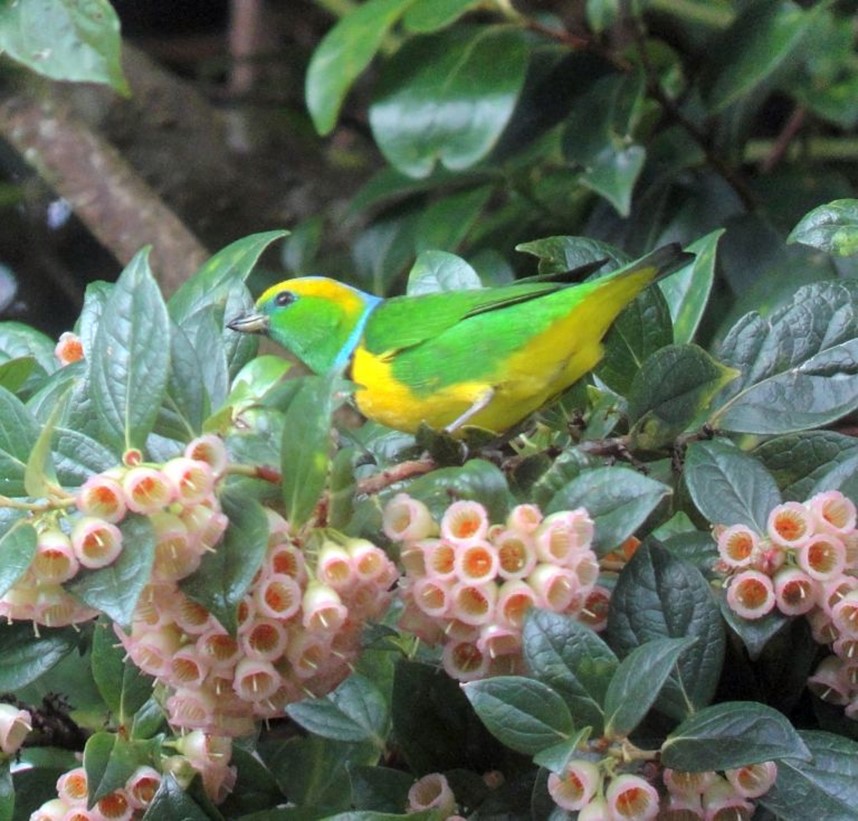
© Patrick O’Donnell
Golden-browed Chlorophonias are essentially beautiful, tropical goldfinches! Like the related euphonias, they are in the same family as goldfinches and specialize on eating the berries of tropical Mistletoe plants. Although they don’t really visit feeders, these emerald and bright yellow birds are fairly common in their cloud forest habitat.
While birding in cloud forest, I often hear their sad whistled calls, and see them foraging in fruiting trees. Chlorophonias can also join mixed flocks of tanagers and other small birds.
Golden-browed Chlorophonias occur in most highland forest sites in the highlands of Costa Rica and western Panama.
Emerald Tanager
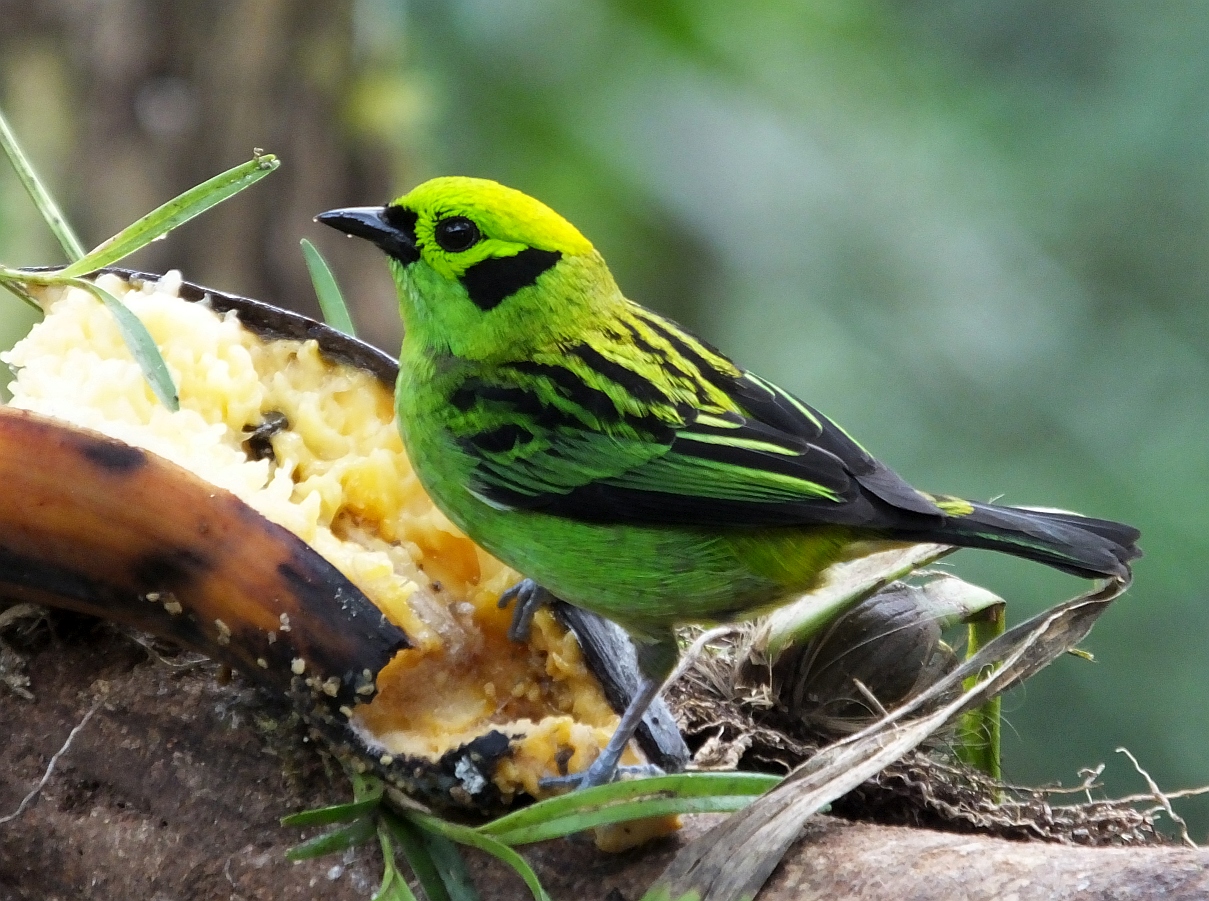
© Patrick O’Donnell
Costa Rica also has tanagers, most are stunning, and there’s too many to mention! One of the most beautiful is the Emerald Tanager. This shining green bird with yellow and black highlights is a common resident of wet and mossy foothill rainforests.
I often see them foraging at fruiting trees and with mixed flocks of other tanager species. However, amazingly, in a few places, these beauties also come to fruit feeders!
Watch the feeders at the Arenal Observatory Lodge, or the San Luis Adventure Center and you should see them. You’ll probably also see them while birding any foothill rainforest on the Caribbean slope.
Blue-and-gold Tanager
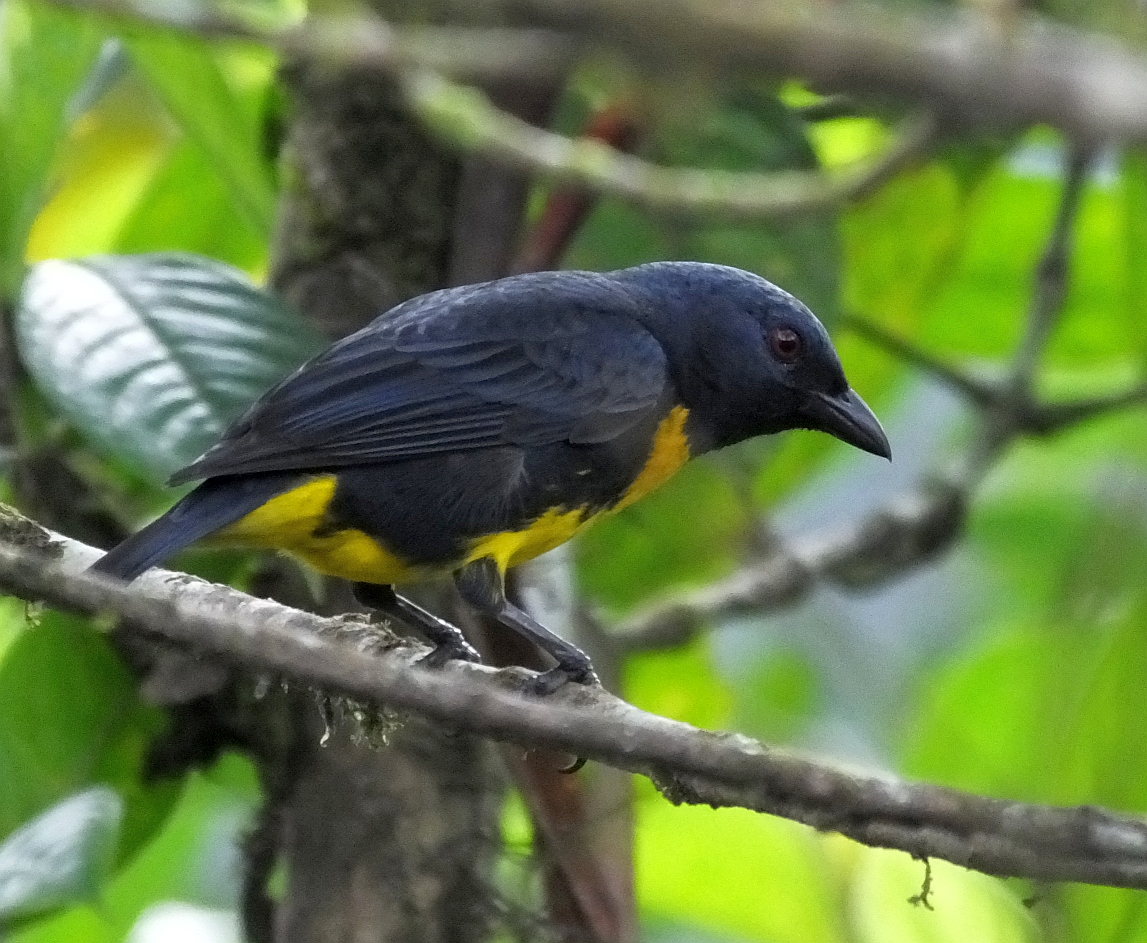
© Patrick O’Donnell
This is one of the other special tanagers in Costa Rica. The Blue-and-Gold Tanager is an uncommon bird restricted to wet foothill and middle elevation rainforest. It also only occurs in Costa Rica and western Panama, and is considered to be “Near Threatened”.
Blue-and-gold Tanagers like to forage for fruits in the canopy and often move around with other tanagers and small birds. However, once in a while, a pair can visit the fruit feeder at the San Luis Adventure Center for fantastic, close views!
Birding Hotspots in Costa Rica
Costa Rica is so jam-packed with birds and biodiversity, I could easily say that the whole country is one big birding hotspot! However, some sites do stand out, and most also have ecolodges and other tourist infrastructure.
In general, the best places for birding in Costa Rica have large areas of intact rainforest. It might not be as easy to see birds as in hotel gardens and other open areas, but mature forest habitats host far more bird species.
Related: How to choose a pair of binoculars
With that in mind, the following Costa Rica birding hotspots are some of my favorites:
- Caño Negro Wildlife Refuge – A fantastic area in northern Costa Rica with wetlands, rainforest, and Sungrebe, Nicaraguan Grackle, and many other uncommon species.
- The Boca Tapada area – A wild area with lots of lowland rainforest in northern Costa Rica. Laguna del Lagarto and other lodges have amazing feeders with fantastic photo opportunities, and chances at many lowland species including rare birds.
- Sarapiqui – Another very good area of lowland rainforest, good birding hotels, private reserves, and the La Selva Biological Station.
- The Cinchona Hummingbird Café – This small roadside café is a local favorite. Fruit and hummingbird feeders attract barbets, toucanets, tanagers, hummingbirds, and more! It’s the perfect place to enjoy coffee and fantastic birds at close range.
- The Monteverde area – This famous destination has plenty of excellent birding opportunities in various cloud forest reserves, and even on hotel grounds. There are lots of hotels and dining options but it can get a bit crowded during the winter months.
- Carara National Park and Tarcoles – Only an hour and a half drive from San Jose, this area is very accessible. The confluence of rainforest, dry forest, wetlands, and other habitats also make it an incredibly rich area for birds!
- The Dota Valley and Cerro de la Muerte – This high elevation area has lots of mature highland rainforest and excellent birding. It’s also one of the best places to see Resplendent Quetzals. Several hotels offer morning quetzal walks!
- The Osa Peninsula – This remote and wild region in southern Costa Rica has fantastic rainforest chock full of birds. It’s one of the only places to see the endemic Black-cheeked Ant-Tanager, and is good for King Vultures and many other species. There are also several options for lodging.
- The San Vito area – This small, quaint town is situated near fantastic birding at the Wilson Botanical Garden and several other sites. Local guides can show visitors many tanagers, hummingbirds, and other middle elevation species.
Frequently Asked Questions
How many bird species does Costa Rica have?
Costa Rica has more than 900 vibrant and colorful bird species to discover.
What is the national bird of Costa Rica?
Costa Rica’s national bird is the Clay-colored Thrush. This country is filled with colorful and vibrant bird species, so it’s only natural to presume their national bird is, too! However, the Clay-colored Thrush is brown in color. But don’t worry, even if the birds don’t stand out much, they make it up with their strong melodious vocals!
Are there any requirements for traveling to Costa Rica?
There are no special requirements for traveling to Costa Rica. Visitors from countries in North America, Europe, and many other places only need a valid passport and a return ticket. You don’t need a visa either, unless you’re planning on staying for more than 90 days.
What is the best time to go to Costa Rica to see birds?
There is no bad time to go to Costa Rica. Although it rains more from April to November, birds also tend to be more active in those months. During the dry season, there is much less chance of rain, wintering birds from the north, but birds might not be as active during the heat of the day.
Why is Costa Rica so unique?
Costa Rica is so unique because it is a small, stable country with an incredible amount of accessible biodiversity. Huge numbers of birds and other species can be seen in rather small areas.
Next up: Local birding destinations & events

